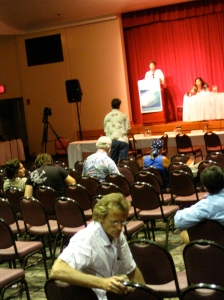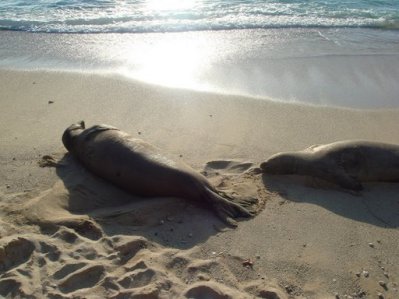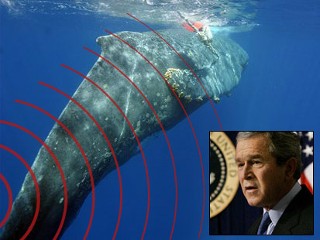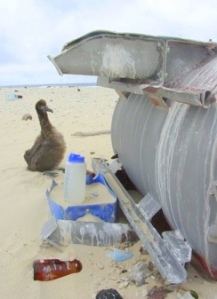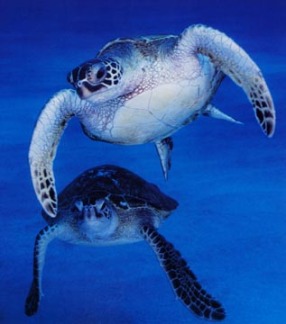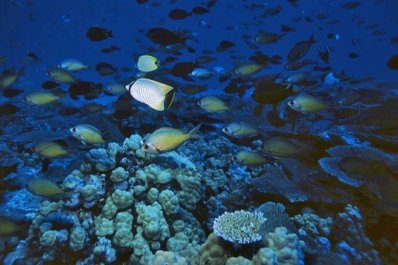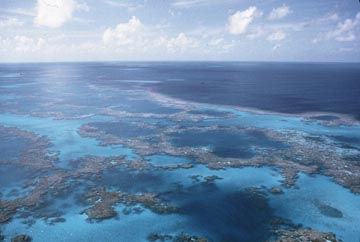From: Andrea
Last night at the public hearing on the Draft Science Plan for Papahanaumokuakea Marine National Monument, held at the monument office in Hawaii Kai, a troubling consequence of the lack of environmental review was elucidated.
One of the Science Plan authors stated that research activities that have already been permitted are assumed to have gone through a “rigorous” review by management. The problem?
Actually, there could be quite a few from this muddy statement. For one, this statement suggests that research activities that have already been permitted will not be scrutinized- nor, certainly, environmentally assessed- in the future. It sounds like grandfathering-in existing and previous permits, meaning some activities that have been permitted in the past will be continuously assumed to pass muster, despite never actually being environmentally reviewed.
Clearly, grandfathering-in research activities so that they never undergo environmental review creates informational ravines that make cumulative impact analysis impossible. Cumulative impacts, the incremental impacts of an action when added to other past, present, and reasonably foreseeable future action, must be assessed. The managers need to understand the big picture, especially when making seemingly small decisions like permitting.
Secondly, what is this “rigorous” review that the manager mentioned? There has been no environmental assessment on any permits nor the entire permitting system nor the Science Plan, so it clearly was not environmental review. If this rigorous review were undertaken via the prioritization system of the Science Plan, that, too, is problematic.
As I have blogged before, the Science Plan has two tragic flaws: (1) the prioritization scheme that doesn’t actually prioritize permit activities (To prioritize permit activities, it asks, pros and…pros?, leading to 97% of potential research activities to be ranked as “critical” or “high” in importance.) and (2) the lack of environmental review.
But, the environmental assessment did not come with the Science Plan. The managers argue that this is the draft plan, so environmental assessment is not appropriate now. However, they also proclaim the plan to be an evolving document- not problematic necessarily. The evolving nature of the plan is problematic, however, for lack of environmental review because, if it is meant to evolve, when would the managers consider environmental review appropriate? There could always be an argument that it is not truly finalized yet if it’s an “evolving” document.
On the other side, if the monument managers, in fact, conduct an environmental assessment for the Final Science Plan, which is the next step after last night’s public hearing, the decision on permitting prioritization will have been made. And, environmental assessment is legally required to take place prior to decision-making. The whole point of environmental review is for decision-makers to be informed of environmental impacts before they make final decisions.
So, either the Science Plan truly is an evolving document, in which case an environmental review is likely to be put off forever. Or, the Science Plan will be finalized in the next step, the Final Science Plan, which frustrates the point of environmental review taking place before decisions are made.
Confusing? Yes. But it need not be.
KAHEA urges the monument managers to take the straightforward approach by conducting environmental review of the Science Plan, which guides the entire permitting process, prior to finalization of the plan. KAHEA also urges environmental review of all permits- no grandfathering-in. Each proposed permit should be looked at with a fresh eye, through the lens of cumulative impacts, which inherently change over time.
Let’s hope that public comments are indeed incorporated into the Final Science Plan, whenever that may be. Otherwise, the one-sided prioritization system will continue to rank most activities high, leading to excessive access and impact in a fragile, irreplaceable ecosystem.
What can you do? Speak up!
Last public hearing on the Science Plan is in Hilo tomorrow:
Hawai‘i, July 23th, 6-8 p.m.
Mokupapapa Discovery Center,
308 Kamehameha Ave, Suite 203, Hilo, HI, 96720.
All written public comments must be received by the monument managers by or before August 10.
• U.S. Mail:
Papahanaumokuakea Marine National Monument, Attn: Science Plan Comments, 6600 Kalaniana‘ole Hwy, Suite 300, Honolulu HI, 96825
• E-mail: nwhicomments@noaa.gov.
To read the plan:
http://papahanaumokuakea.gov/research/plans/draft_natressciplan.pdf
(It takes a few minutes to download, but once you’re there, skip to page 10 for the prioritization chart.)
Read Full Post »
